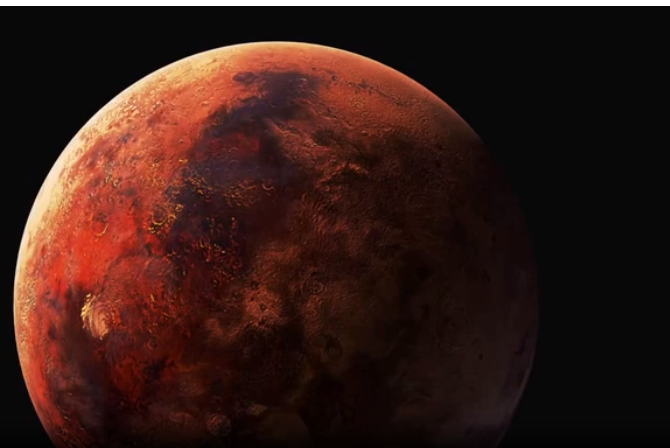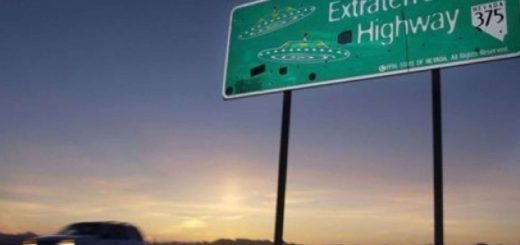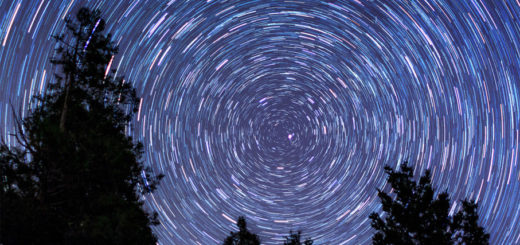Mars ‘terror,’ future Moon missions and an epic journey to the Sun: 2018’s year in space

2018 has been a busy year for space exploration. Here are some of the highlights:
MARS LANDER’S ‘SEVEN MINUTES OF TERROR’
NASA’s Mars InSight Lander reached the Red Planet on Nov. 26 after an epic journey of more than 300-million miles that lasted six months. The final stage of its descent, however, was fraught with difficulty – NASA engineers characterize landing on Mars as “seven minutes of terror.”
Safely settled on the surface of the planet, sensors on the Lander recently captured the first-ever “sounds” of Martian wind. The probe also used a camera on its robotic arm, to take its first Mars selfie.
The InSight mission, which is managed by NASA’s Jet Propulsion Laboratory, will provide scientists with a wealth of data. By studying Mars’ deep interior, the mission is expected to provide valuable information on the formation of rocky worlds, including Earth.
Mars looms ever larger in America’s space future.
In November, NASA announced that it has selected the location where its Mars 2020 Rover will land on the Red Planet. The rover is expected to reach the Martian surface on Feb. 18, 2021.
NASA’s long-term goal is to send a manned mission to Mars in the 2030s. However, former astronaut Buzz Aldrin thinks that a slightly later target date of 2040 is more realistic. In an interview in 2016, the Gemini 12 and Apollo 11 astronaut told Fox News that by 2040, astronauts could have visited Mars’ moon Phobos, which could serve as a sort of stepping stone to the Red Planet.
MASSIVE MARS DISCOVERY
NASA’s Curiosity Mars rover found organic molecules on Mars, the space agency revealed in a major announcement in June.
The molecules, which were found in rocks from an ancient lake bed, provide fresh insight into the Red Planet, according to scientists. The rocks are billions of years old, NASA said.
While NASA went to great lengths to explain that it has not discovered life on Mars, the organic molecules could provide vital clues.
“Organic compounds are fundamental to our search for life,” said Paul Mahaffy, director of the Solar System Exploration Division at NASA’s Goddard Space Flight Center in Goddard, Md.
Described as the most technologically advanced rover ever built, Curiosity launched on Nov. 26, 2011. The rover landed on Mars’ Gale Crater on Aug. 6, 2012, with the goal of determining whether Mars was ever able to support microbial life.
NASA’s OSIRIS-REx, which stands for Origins, Spectral Interpretation, Resource Identification, Security-Regolith Explorer, reached its orbit at asteroid Bennu on Dec. 3 after traveling more than 1 billion miles through space. The spacecraft launched in September 2016 from Cape Canaveral Air Force Station.
The asteroid may provide answers to the origin of our solar system, according to NASA.
OSIRIS-REx will spend almost a year surveying the space rock from orbit. The probe is scheduled to briefly touch the asteroid with a robotic arm in July 2020 and retrieve a sample that will be returned to Earth in September 2023.
Scientists recently made a fascinating discovery on the asteroid. They analyzed data from the probe and identified water locked inside the asteroid’s clay, the space agency announced. The spacecraft’s two spectrometers revealed the presence of “hydroxyls,” which are molecules containing oxygen and hydrogen atoms bonded together.
Other countries are also ramping up their efforts to study asteroids. The Japan Aerospace Exploration Agency’s (JAXA) Hayabusa 2 spacecraft recently lowered two small rovers onto a distant asteroid. Hayabusa 2 arrived at Ryugu on June 27, 2018, when the asteroid was almost 170 million miles from Earth. The spacecraft, which traveled almost 2 billion miles to reach the space rock, is expected to leave Ryugu at the end of 2019 and return to Earth around the end of 2020.
On Oct. 11, NASA astronaut Nick Hague and Russian cosmonaut Alexei Ovchinin made a dramatic escape after their Soyuz booster rocket failed just two minutes after launch from the Baikonur Cosmodrome in Kazakhstan.
The spacecraft was about 30 miles above Earth’s surface when the crew was forced to make a dangerous “ballistic re-entry” into Earth’s atmosphere. After the successful deployment of its parachute, the rescue capsule landed safely in the steppes of Kazakhstan about 30 minutes after the rocket failure.
A Russian investigation attributed the failure to a sensor that was damaged during the rocket’s final assembly.
US, RUSSIAN ASTRONAUTS MAKE DANGEROUS BALLISTIC RE-ENTRY INTO EARTH’S ATMOSPHERE AFTER ROCKET FAILS
Less than two months later, a Russian Soyuz spacecraft carrying three astronauts, including one American, successfully docked with the International Space Station. The launch from Kazakhstan was the first successful manned mission to the space lab since the aborted Soyuz launch.
The Soyuz spacecraft is currently the only vehicle that can ferry crews to the space station, but Russia stands to lose that monopoly in the coming years with the arrival of SpaceX’s Dragon and Boeing’s Starliner crew capsules.
The leak was spotted on Aug. 30 in a Russian Soyuz spacecraft attached to the orbiting space lab. The crew quickly located and sealed the tiny hole that created a slight loss of pressure, and space officials said the station has remained safe to operate.
The capsule leak caused a flap between the U.S. and Russian space agencies. Russian space chief Dmitry Rogozin observed that the hole could have been drilled during manufacturing — or in orbit. The space station’s commander at the time flatly denied any wrongdoing by himself or his crew.
SPACE STATION CREW TO INSPECT MYSTERIOUS HOLE ON SPACEWALK
The Russian space chief has since backpedaled on his statement, saying that he never pointed the finger at U.S. astronauts and blaming the media for twisting his statement.
Rogozin said recently that the Russian official probe is ongoing. During a grueling spacewalk in December, Russian cosmonauts took samples of the black epoxy sealant protruding from the hole and put insulation over the area. Roscosmos will discuss the probe findings with NASA and other space station partners, according to Rogozin.
NASA ANNOUNCES MOON, MARS MISSION PARTNERS
In November, NASA announced that Lockheed Martin and eight other companies will compete for $2.6 billion worth of contracts to help take American astronauts back to the Moon and Mars.
In addition to Lockheed, which built the Mars InSight lander, NASA’s commercial partners include Astrobotic Technology, Deep Space System, Draper, Firefly, Intuitive Machines, Masten Space Systems, Moon Express and Orbit Beyond.
The contracts could be worth as much as $2.6 billion over a span of 10 years and flights could start as soon as next year, officials said. The original list included more than 30 companies vying for the bids, including Elon Musk’s SpaceX and Jeff Bezos’ Blue Origin.
President Donald Trump wants U.S. astronauts to return to the Moon as a foundation for future Mars missions.
The last time a human set foot on the Moon was during the Apollo 17 mission in December 1972. Only 12 men, all Americans, have set foot on the Moon.
NASA’s goal is also to send to manned missions into space from U.S. soil during the coming years. Since the retirement of the space shuttle in 2011, the U.S. has been relying on Russian Soyuz rockets, launched from Kazakhstan, to get astronauts to the ISS.
In August, NASA also named nine “American hero” astronauts that will crew the test flights and first space station resupply missions on SpaceX Crew Dragon and Boeing CST-100 Starliner spacecraft.
NASA’s Parker Solar Probe blasted off on its odyssey from Cape Canaveral Air Force Station atop a United Launch Alliance Delta IV Heavy rocket in the early hours of Aug. 12, 2018.
The $1.5 billion mission will take humanity closer to the Sun than ever before. Parker is the first spacecraft to fly through the Sun’s corona, the outermost part of the star’s atmosphere
To withstand the heat of nearly 2,500 degrees Fahrenheit, the probe is protected by a special 4.5-inch-thick carbon-composite shield.
NASA’S PARKER SOLAR PROBE BLASTS OFF ON EPIC JOURNEY TO ‘TOUCH THE SUN’
Parker will face “brutal” heat and radiation during the epic journey that will take it to within 3.83 million miles of the Sun’s surface, according to the space agency. This is seven times closer than the previous closest spacecraft, Helios 2, which came within 27 million miles of the Sun in 1976.
Harnessing Venus’ gravity, Parker will complete seven flybys over seven years to gradually bring its orbit closer and closer to the Sun. On its closest approach in 2024, the probe will be traveling at approximately 430,000 mph, setting a new speed record for a manmade object.
The Sun’s corona, which can be seen during a total solar eclipse, is usually hidden by the bright light of the star’s surface. The probe, named after pioneering solar physicist Dr. Eugene Parker, will provide a wealth of invaluable scientific data.
Scientists expect to shed new light on the Sun’s potential to disrupt satellites and spacecraft, as well as electronics and communications on Earth.
In November, the probe snapped a stunning picture of the Sun’s atmosphere.
‘SUPER-EARTH’ DISCOVERY
In March, scientists announced the discovery of 15 new planets, including a “super-Earth” that may have liquid water on its surface.
The planets are orbiting small, cool stars near our solar system, known as “Red Dwarfs.”
One of the brightest Red Dwarfs, K2-155, has three “super-Earths,” one of which, K2-155d, could be within the star’s habitable zone. K2-155d, which has a radius 1.6 times that of Earth, may harbor liquid water, according to three-dimensional global climate simulations.
K2-155 is about 200 light-years from Earth. A light-year, which measures distance in space, equals 6 trillion miles.
PLANETS IN GALAXIES BEYOND MILKY WAY SPOTTED FOR FIRST TIME
In February, revealed the discovery, for the first time, of planets in galaxies beyond the Milky Way.
Using data from NASA’s Chandra X-ray Observatory, a team of astrophysicists from the University of Oklahoma identified the extragalactic planets about 3.8 billion light-years away. The space observatory helped scientists find about 2,000 objects with comparable mass to the Moon and Jupiter.
The Oklahoma University team used a technique called microlensing, which identifies the gravitational signature of planets orbiting extremely distant stars.
MYSTERIOUS INTERSTELLAR OBJECT
Oumuamua, the first interstellar object ever spotted in our solar system, also garnered plenty of attention in 2018. NASA said that Oumuamua is a “metallic or rocky object,” while a study from the Harvard Smithsonian Center for Astrophysics speculated that it could be a “lightsail” sent from an ancient civilization.



 Creators of mankind
Creators of mankind Description of “Tall white aliens”
Description of “Tall white aliens” Where they came from?
Where they came from? About hostile civilizations
About hostile civilizations The war for the Earth
The war for the Earth “Tall white aliens” about eternal life
“Tall white aliens” about eternal life Video: “Nordic aliens”
Video: “Nordic aliens” Aliens
Aliens Alien encounters
Alien encounters The aliens base
The aliens base UFO
UFO Technology UFO
Technology UFO Underground civilization
Underground civilization Ancient alien artifacts
Ancient alien artifacts Military and UFO
Military and UFO Mysteries and hypotheses
Mysteries and hypotheses Scientific facts
Scientific facts


















